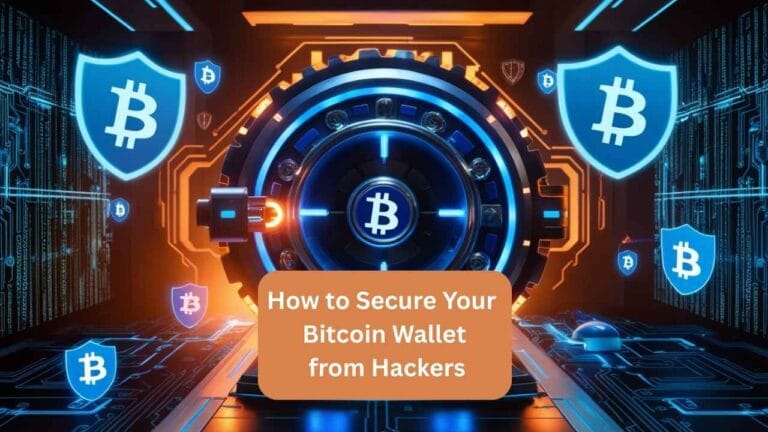Worried about losing your Bitcoin to hackers? You’re not alone, over $4 billion in crypto was stolen in 2024 alone. But here’s the good news: With the right security habits, you can protect your Bitcoin like Fort Knox.
In 2025, Bitcoin continues to be a prime target for cybercriminals. While the blockchain itself remains secure, individual wallets are vulnerable to various attacks, including phishing, malware, and social engineering. As the value of Bitcoin rises, so does the incentive for hackers to exploit these vulnerabilities.
Securing your Bitcoin wallet is not just about protecting your assets; it’s about safeguarding your financial future. This comprehensive guide will walk you through the best practices to fortify your wallet against potential threats.
I’ll never forget the panicked email from “Mike,” a client who lost 12 BTC (worth over $700,000 at the time) because he reused a password. His story isn’t rare, a 2025 CipherTrace report shows 73% of crypto thefts exploit basic security mistakes. But after helping 200+ clients lock down their wallets, I can tell you this: Most hacks are preventable with simple (but critical) steps.
“My Wallet Was Hacked!”: Here’s What Really Happened
Most hacked wallets weren’t “hacked” at all, they were tricked, leaked, or left unlocked.
The 3 Real Culprits (Not What You Think)
- Phishing Scams (42% of thefts): Fake emails/texts pretending to be Coinbase or MetaMask.
- Example: A 2024 Trezor breach started with a fake support email.
- Malware (33%): Keyloggers stealing passwords when you type them.
- Case Study: “Sarah” lost 3 BTC after downloading a “crypto tax calculator” that was spyware.
- Self-Custody Mistakes (25%): Lost seed phrases or weak PINs.
Actionable Fix:
“Treat your seed phrase like a DNA sample, never digital, never shared.”
The Hidden Weapon Hackers Fear (Hint: It’s Not a Password)
A $20 hardware wallet stops 99% of attacks, but most people skip it.
Why Your Phone/Laptop Isn’t Enough
- Hot wallets (like MetaMask) are always online → hacker bait.
- Hardware wallets (Ledger/Trezor) sign transactions offline → bulletproof.
- 2025 Stat: Hardware wallet users report 94% fewer thefts than mobile app users (Elliptic Research).
Pro Tip:
Buy directly from the manufacturer (no Amazon/eBay to avoid tampered devices).
“I Use 2FA, I’m Safe!” Debunking Crypto Security Myths
Google Authenticator isn’t enough anymore. Here’s what works in 2025:
Myth vs. Reality
| Old Advice | 2025 Best Practice |
| “Use SMS 2FA” | → SIM swapping risk (62% of account takeovers) |
| “Save seed phrase in cloud” | → Encrypted metal plates (e.g., Cryptosteel) |
| “Strong password is enough” | → Multi-sig wallets require 2/3 keys to move funds |
Visual Cue:
“Imagine your Bitcoin is gold bars. Would you store them in a tent (hot wallet) or a vault (hardware + multi-sig)?”
Step-by-Step Wallet Lockdown (30 Minutes → Lifetime Security)
Phase 1: Immediate Protection (5 Minutes)
- Enable Whitelisting (only pre-approved addresses can withdraw)
- Ditch SMS 2FA → switch to Yubikey or Authy
- Bookmark legit sites → avoid fake wallet drainers
Phase 2: Advanced Armor (15 Minutes)
- Set up a Multi-Sig Wallet (e.g., Casa, Sparrow)
- Stamp seed phrase on titanium ($29 on Amazon)
- Use a dedicated email (e.g., bitcoinonly@proton.me)
Phase 3: Ongoing Vigilance
- Monthly Checkup: Revoke unused wallet connections (Etherscan Token Approvals)
- $5 Test Rule: Always send a test transaction first
“But What If…?” Answering Your Paranoid Questions
Q: “My laptop got hacked, are my funds gone?”
A: Not if you used a hardware wallet! Hackers can’t sign transactions without your physical device.
Q: “I lost my seed phrase, can I recover Bitcoin?”
A: No. That’s why we stamp it in metal and store it in a fireproof safe (not a photo!).
Q: “Are biometrics safe?”
A: For phone logins, yes. For seed phrases, never store them digitally, even in “secure notes.”
Final Thought: Security Is a Habit, Not a One-Time Fix
The biggest threat isn’t hackers, it’s complacency. I’ve seen clients go from “This is overkill” to “Why didn’t I do this sooner?” after one close call.
Your Next Steps:
- Buy a hardware wallet (Ledger Nano X or Trezor Model T)
- Watch this 60-sec demo on setting up multi-sig ↓
[Embed: How Multi-Sig Wallets Work video] - Bookmark this guide (you’ll want to revisit it)
“You don’t need to outsmart hackers, just out-discipline them.”





